Rats! These tiny, scurrying rodents can cause greater harm than you think and here's what we can do about the scourge
As the authorities step up enforcement against rodent-related lapses, experts warn that rising urbanisation, climate change and improper waste management would continue to fuel the surge in rat populations.
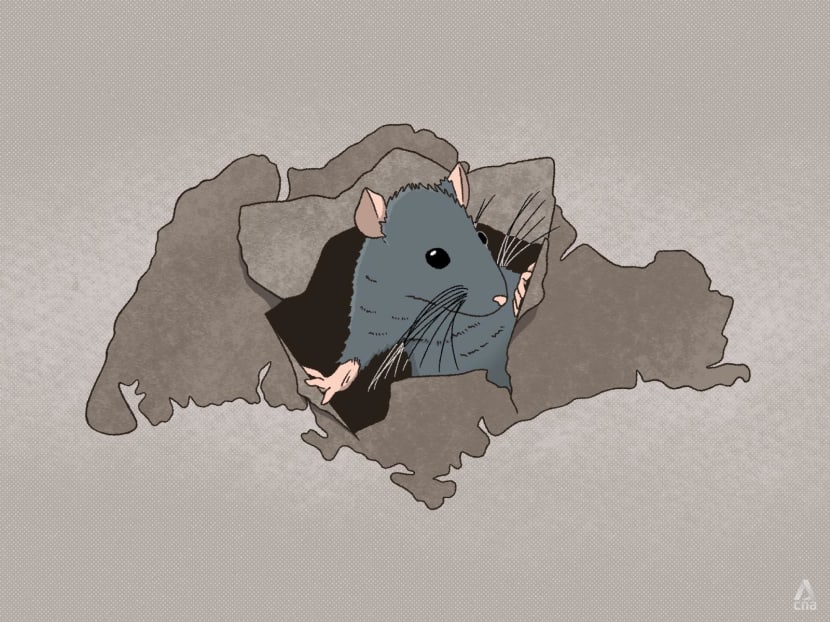
Rats reproduce quickly. The main species in Singapore are able to produce four to 12 pups a litter and they have an average lifespan of one year. (Illustration: CNA/Nurjannah Suhaimi)

This audio is generated by an AI tool.
Private tutor Tan Mei Lin used to enjoy spending nights unwinding at East Coast Park with her friends, sitting by the breakwaters.
However, the 29-year-old has been avoiding the area lately, because she frequently finds herself in a standoff with rats at the park.
“There are so many rats at night. I’ve seen them scampering around,” Ms Tan said, adding that she has noticed an uptick in rodents at the park since late 2023.
“I like to sit at East Coast Park to clear my mind, but with all the rats, I can’t even enjoy the park in peace.
“I’m terrified because they carry diseases. And if they were to attack me, I wouldn’t know what to do.”
Over at an office in Eunos, a worker who wanted to be known only as Mr Wong told CNA TODAY that his workplace has been grappling with a rat problem since the start of the year.
He declined to give his full name because he does not want his bosses to know he spoke to the media about this.
The 32-year-old events manager said that he began noticing rat droppings around the corners of his office table in early January.
“It was hard to miss because it looked like small black pellets and they appeared out of nowhere. After observing further, I found that the tables around me had similar rat droppings.”
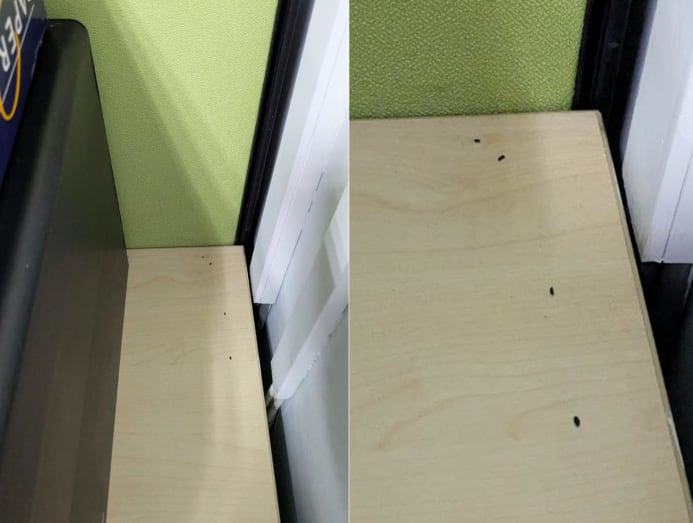
Once, his colleagues even spotted a rat scurrying across the office floor – something that has “never happened until recently”, Mr Wong said.
Worried about the diseases the rats might carry and having rat droppings constantly on his desk, he was “desperate to resolve the issue”.
So when the pest control firm that his company had hired failed to trap the rats, Mr Wong set up his own closed-circuit television camera later that month to track the rodents’ movements before laying his own traps.
So far, two rats have been caught and although the situation has “gotten better”, he suspected that there may still be more lurking in the office.
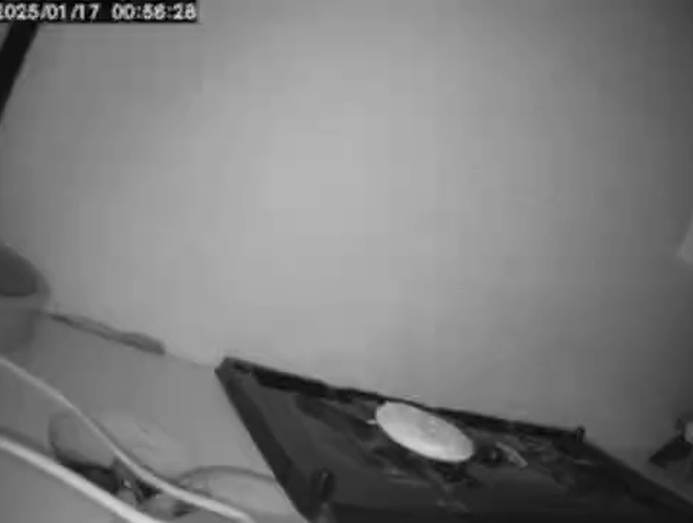
Such close encounters with the scurrying kind are becoming more common in Singapore.
Despite efforts by the authorities to keep the pests in check, rat infestations have been on the rise here, driven by factors such as urbanisation and climate change.
In February, the Singapore Food Agency (SFA) and National Environment Agency (NEA) said that preliminary investigations found signs of rats at the ceiling and the common area of Beauty World Food Centre. In the same month, rats were also seen invading the aviaries at Mandai’s Bird Paradise, a tourist attraction.
With lapses in housekeeping and trash management that then lead to rat infestations, NEA announced last month that it would tighten enforcement against business owners and managers from Apr 1.
In 2024, NEA and SFA jointly carried out 1,000 enforcement actions against businesses, including shopping malls and food establishments. The figure is nearly double the 670 actions taken in 2023 for rat-related lapses.
The rodent problem is not unique to Singapore. Rat sightings have been on the rise worldwide.
A January 2025 article from the Science Advances journal, published by the American Association for the Advancement of Science, found that 11 out of 16 cities studied globally showed significant increasing trends in rat numbers.
Cities experiencing greater temperature increases and cities with denser human populations and higher levels of urbanisation saw larger increases in the rat population, the article noted.
THE ECONOMIC IMPACT OF RAT INFESTATIONS
While the “yuck” factor and health concerns quickly come to mind with rat infestations, the negative impact that the rodents can have on the economy should not be taken lightly either.
Though there are no known studies in Singapore on the economic impact of rat infestations, a 2023 article published in scientific journal PeerJ, which covers research in the biological and medical sciences, found that invasive rodents were racking up high economic costs worldwide.
The researchers said their “conservative” analysis showed that rodent invasions were costing economies about US$87.5 million (S$116.5 million) yearly between 1980 and 2022, and that this figure was significantly increasing over time.
Mr Song Seng Wun, an economic adviser at financial services provider CGS International in Singapore, said that in addition to the costs of hiring cleaning services to maintain hygienic environments and engaging pest control experts to address infestations, businesses might also face economic setbacks from managing the reputational damage caused by rat sightings on their premises.
They might also incur expenses related to repairing infrastructure such as cables and wires damaged by the rats’ gnawing.
Industries that could be directly affected by a rise in rat infestations include the tourism, hospitality, as well as the food and beverage (F&B) sectors. The healthcare industry might also have to bear increased costs from treating and tackling rat-transmitted diseases.
Professor Abhishek Singh Bhati, pro vice-chancellor and chief executive officer of the Newcastle Australia Institute of Higher Education, said that businesses might also incur higher operational compliance costs, due to increased regulatory scrutiny and fines imposed for failing to maintain proper hygiene standards on their premises.
Rat infestations at hotels and tourist attractions could also result in negative word-of-mouth and a decline in customer trust and patronage – possibly lowering Singapore’s value proposition as a tourist destination, Prof Bhati added.
If the infestations are left unmanaged in the long run, Singapore’s reputation as a clean and safe destination may be affected, making it difficult to host MICE (meetings, incentives, conventions and exhibitions) and entertainment events, he added.
Mr Cornelius Tan, chairman of the Chinatown Complex Hawkers’ Association, said that for F&B outlets, rat infestations would naturally result in eateries losing diners’ trust and business.
An employee at an eatery along Toa Payoh Lorong 8, where rats have previously been found, told CNA TODAY that the F&B joint has tightened pre-emptive measures taken against rats in the aftermath of the incident.
Besides buying metal planks that can be used to shutter part of the doors in the eatery to prevent rats from entering, the employee, who wanted to be known only as Ms Wang, estimated that the business spends about S$100 a month on other pest control measures such as rat traps.
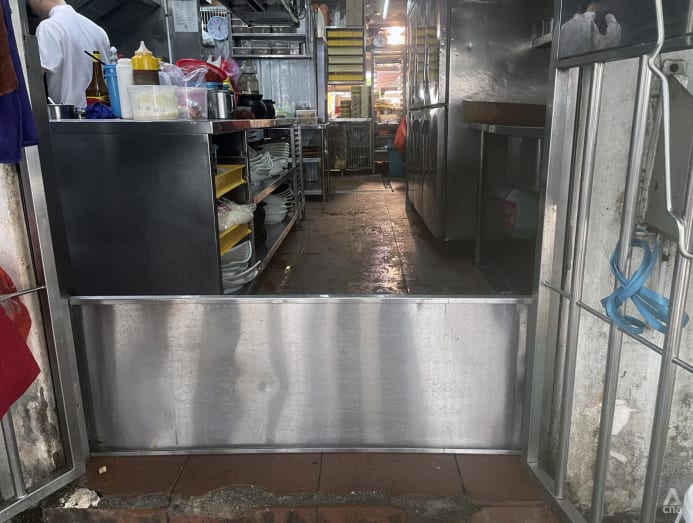
THE HEALTH RISKS
Rats are vectors for diseases, so an increase in rodent infestations and rat-related lapses could result in significant health hazards.
Rat-transmitted diseases can be passed to humans through direct contact or breathing in dust contaminated with rat urine or droppings, or via a flea bite from an infected rat, NEA states on its website.
In Singapore, the main rat-transmitted diseases are leptospirosis, hantaviruses and murine typhus, which can cause severe health complications, healthcare experts told CNA TODAY.
Figures published on Jan 3 this year by the Ministry of Health (MOH) in its weekly Infectious Diseases bulletin revealed that 62 cases of leptospirosis were recorded in 2024, same as the previous year.
Dr Shawn Vasoo, clinical director at the National Centre for Infectious Diseases (NCID), said that leptospirosis is transmitted via exposure to water or soil contaminated with rat urine, while murine typhus is spread by the fleas from rats.
For murine typhus, 74 cases were recorded in 2024, almost triple the 25 cases seen in 2023.
The MOH bulletin did not mention any hantavirus cases.
Hantavirus was recently in the spotlight after it was found to be the cause of death for Betsy Arakawa, the wife of American actor Gene Hackman, late last month. The Hollywood actor died from heart disease and other factors a few days later.
Dr Paul Tambyah, the immediate past president of the International Society for Infectious Diseases, said that given the diseases’ transmission methods, some occupations or activities may put members of the public a little more at risk.
For example, given that leptospirosis is known as the “rat urine” disease, people at risk of infection would be sewage workers or those who engage in recreational activities in water bodies, such as canoeists who capsize.
As hantaviruses are spread from breathing in or being in close contact with rat urine or faeces, the people at highest risk are cleaners who clean areas infested with rats, he said.
Dr Tambyah added: “Murine typhus is interesting. It is spread by the fleas from rats. So there is the paradox where, if we engage a rat exterminator and the rats are killed, the fleas will leave the rats and can end up settling on the nearby humans.”
He recounted a particular case that he came across, a woman who ran an antique business.
“She told us that when she received some old furniture, the rats would come running out, so she called the rat exterminators,” he said.
Unfortunately, she ended up with murine typhus because the fleas landed on her once the rats were dead.
Overall, however, the daily activities of most of the general public are unlikely to put them at risk, Dr Tambyah added.
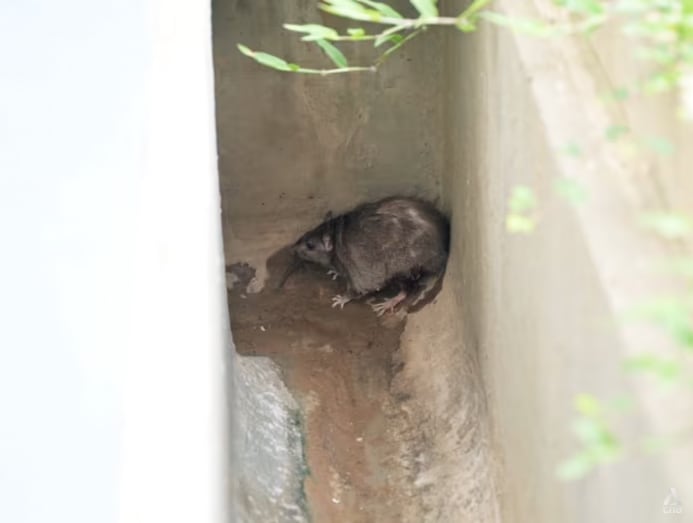
The three rat-borne diseases aside, there is also the risk of rat-bite fever.
Additionally, rats have been implicated in the transmission of salmonella and antibiotic-resistant infections, Dr Tambyah said.
Rat-bite fever, which could occur after one is bitten by a rat, does not spread from person to person, Dr Tambyah explained.
“The symptoms are not very specific and include fever, headache and muscle pains, so unless one recalls a rat bite, the diagnosis may be missed.”
Rat-bite fever is “extremely rare”, Dr Tambyah said, adding that there have been only two published reports of rat-bite fever in the last two decades in Singapore.
Dr Loh Jiashen, an infectious diseases specialist at Farrer Park Hospital, said that leptospirosis is quite easily transmitted, whereas diseases such as hantavirus or rat-bite fever would require closer proximity or contact.
However, the public can be reassured that these diseases are “a few orders lower” in transmissibility compared with dengue, for example, and these rat-transmitted diseases are generally quite easily treated, Dr Loh added.
Note, though, that the symptoms of rat-transmitted diseases can turn severe in extreme cases.
Dr Loh said: “For leptospirosis, most of the time, it’s a mild illness. But in severe cases, it can affect the lungs, cause kidney failure to the point of dialysis, or cause liver impairment and pneumonia to the point of coughing blood.”
Apart from infecting humans, rats can also spread diseases to other animals.
Last February, veterinarians here told CNA that a growing urban rat population was among the key reasons for a rise in cases of leptospirosis, a deadly disease among dogs.
Dr Loh said: “This is something pet lovers should take note of.”
HOW RATS AFFECT BIODIVERSITY
Generally, rats are an invasive species and can cause significant damage to ecosystems and wildlife, experts told CNA TODAY.
Dr Ajai Vyas, an associate professor from the School of Biological Sciences at Nanyang Technological University (NTU), said that rats are generally bad for native flora and fauna.
Citing studies conducted in isolated environments such as islands without humans, Dr Vyas said: “Where humans are not present, (researchers) have been able to remove all rats and you see an upside. The populations of other animals and other plants increase. The natural ecosystem reverts to its healthy state.”
Besides feeding on bird eggs, rats can also destroy grains, crops and other produce, though such an agricultural problem is less relevant in Singapore’s case, Dr Vyas added.
Specific to Singapore’s context, Dr Vyas stated that the extent of biodiversity and environmental impact brought about by rat infestations remains to be studied.
After all, if rats have access to other food sources such as food waste in urban settings, they are unlikely to compete for other plants or animals in the ecosystem.
However, as with all invasive species, if rat populations do not have “biological checks and balances” in the ecosystem, they are likely to “run amok” and be a problem for others, Dr Vyas said.
On these “biological checks and balances”, Mr Kalai Vanan Balakrishnan, co-chief executive officer at the Animal Concerns Research and Education Society (ACRES), noted that in Singapore, rats are a vital food source for some predators such as the reticulated python.
Being “more tolerant” of such wild animals can thus help to keep the rodent population in check.
Mr Kalai said: “Communities and government stakeholders can be more tolerant of other wild animals that prey on rats. Pythons spotted in urban areas can be ushered or guided into drains instead of relocated elsewhere for a start. This way, they can continue preying on rats.”
Mr Clement Tan, president of the Singapore Pest Management Association, said that Singapore is home to three main types of rats:
- Norway or sewer rat (Rattus norvegicus): Found in sewers, drains and lower ground areas. They are burrowers and thrive in environments with accumulated waste and stagnant water.
- Roof rat (Rattus rattus): More agile and commonly found in higher locations such as attics, ceiling voids and trees. They are drawn to food sources in commercial buildings, markets and residential areas.
- House mouse (Mus musculus): Typically found in wall cavities, storage boxes and kitchen cupboards. They are smaller in size and tend to infest residential and commercial buildings.
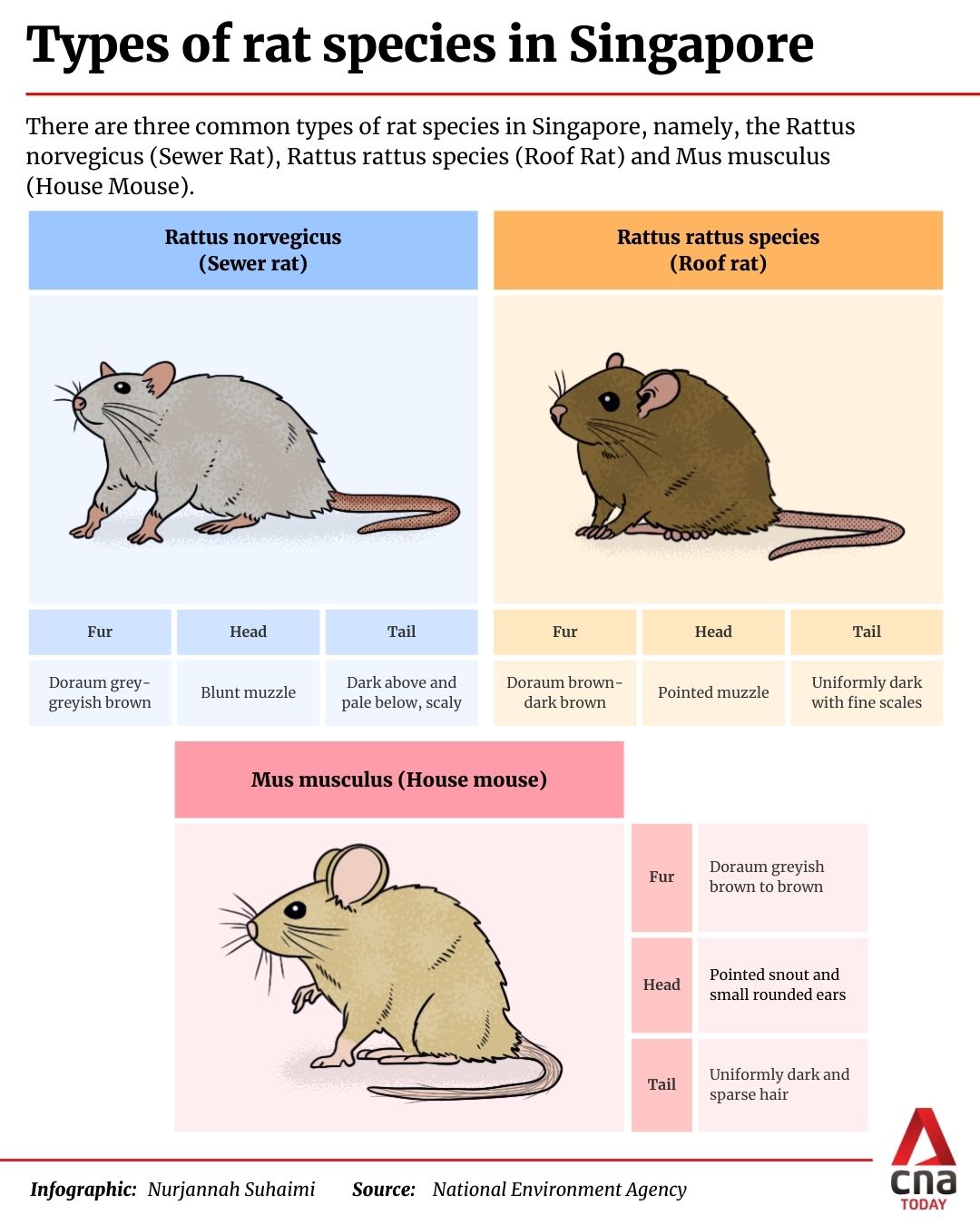
The rats also reproduce quickly. The three common species here are able to produce four to 12 pups a litter and they have an average lifespan of one year.
Beyond these three rat species that are common to urban areas, Singapore is also home to the Asian house shrew, Mr Kalai from ACRES said.
“Unfortunately, Asian house shrews are also considered by many people as pests, even though they help to keep insects like cockroaches’ populations in check,” he added.
On its website, NEA states that the Asian house shrew – or Suncus murinus – is an insectivore and is often mistaken as a rat.
Like the rat, the Asian house shrew shares a similar reproductive prowess and can be found in urban settings here, such as near homes or in areas with human activity that include vegetated spaces and gardens.
NEA acknowledged that shrews have not been implicated as vectors that transmit diseases, but there have been reports of shrews found harbouring pathogens such as hantaviruses and leptospira bacteria.
“They should thus be regarded as potential carriers of diseases and handled with care, much like other wild animals,” it said.
And even though there is “no need” for specific measures to control the shrew population, NEA said that its rat-control measures would likely have a secondary effect in also regulating the shrew population.
WHY RATS ARE SO HARD TO ERADICATE
Despite stepped-up enforcement efforts by the authorities, rodents continue to thrive and multiply in Singapore, almost as if they have the upper hand in the cat-and-mouse game with their licensed predators.
What gives?
The fact that more rats are making themselves at home in Singapore can be seen from the rise in demand for pest control services.
Mr Tan from the Singapore Pest Management Association said that the number of rat-related pest control cases varies across companies, but the industry has seen a “noticeable increase” in service requests over the past five years.
Mr Ivan Lim, sales and operation director at pest control firm Bingo Pest, said that the company receives about 22 to 30 enquiries a month for assistance on rat problems – an increase of about 20 per cent from its monthly average five years ago.
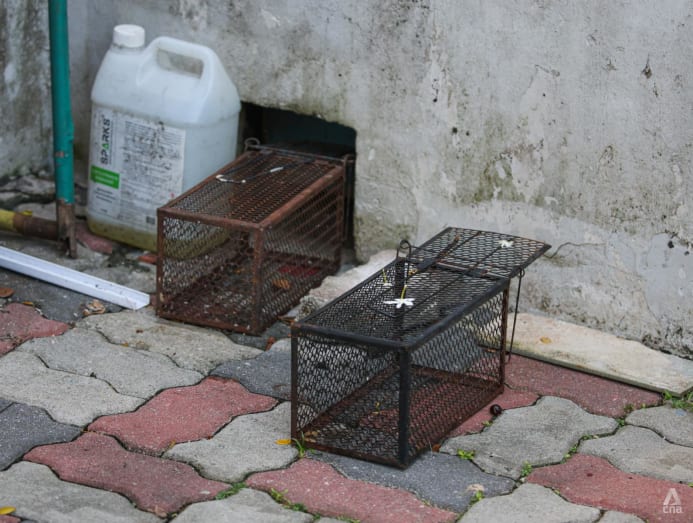
Biological science and pest control experts said that the rise in rat infestations can be attributed to a combination of factors that favour rodent survival, including increased urbanisation, improper waste management and rising temperatures brought about by climate change.
After all, rats thrive where food, water and shelter – often referred to as the “pest triangle” – are readily available, Mr Tan said.
“As Singapore continues to urbanise … the construction of complex building infrastructure provides rodents with more spaces to thrive,” he added.
Structures such as false ceilings, ledges, service ducts and void spaces create undisturbed nesting areas for rats, making their detection and control more challenging.
Underground networks such as drainage and utility tunnels also offer rats safe passage and breeding grounds, enabling their populations to persist despite control efforts.
New buildings with complex structures, voids and empty space – if not designed with rodent-proofing in mind – can also create unintended rodent dwellings, Mr Tan said.
Mr Lim from Bingo Pest said that ongoing and new constructions – such as the development of new mass rapid transit (MRT) lines and housing areas – may also disturb the natural habitat of rats.
This forces them to relocate and seek shelter in nearby areas such as homes, business environments and food establishments, where food and water sources are more readily available.
Furthermore, as human population density increases, more waste is generated. If this waste is improperly sealed or not promptly cleared, it can attract rodents easily.
Mr Lim said that Singapore is a relatively clean country, but it is not uncommon to find improperly stored food, uncovered bins or food waste in public areas and at food establishments.
For example, most tray-return areas in hawker centres or at coffee shops still use uncovered bins. Used cutlery and utensils with food debris that are not promptly kept or cleaned can also attract a variety of pests, including rats.
This improper disposal of food waste in urban areas thus provides rodents with a consistent food source, allowing them to flourish, the experts said.
Singapore’s hot and humid conditions – coupled with ever-rising temperatures in recent years due to global warming – also create a hotbed that supports rats’ breeding cycles.
Although efforts to stamp out rat infestations have simultaneously been stepped up, these creatures are highly adaptable and may develop resistance to the measures used over time.
Mr Lim from the pest-control firm said: “Rats are intelligent pests and they are adept at sensing danger. They quickly learn to avoid traps, particularly if they have encountered them before. Pregnant rats also have heightened awareness and are challenging to eliminate.
“These make trapping rats difficult. This also suggests that it’s almost impossible to replicate the efforts. While we celebrate successes, we are also required to outsmart the rats and constantly change the way we control them.”
Apart from traits that make controlling the rat population challenging – such as developing bait shyness or exhibiting neophobia, or a fear of new objects – the rodents' rapid reproduction rate makes eradication difficult once an infestation is established, Mr Tan from the Singapore Pest Management Association said.
DEALING WITH "INEVITABLE" RAT RUN-INS
Given the different factors that make it challenging to eradicate rats, taking an integrated pest management approach and blending various pest control components together is crucial, the experts said.
Mr Tan said that simply relying on a single pest control method such as baiting with rodenticides is not enough, because rats can avoid baits or develop bait shyness.
Instead, multiple control methods such as baiting, trapping and environmental management are typically the most effective approach and yield the best long-term results.
Responding to CNA TODAY’s queries, the Aljunied-Hougang Town Council (AHTC) said that it uses a combination of methods to manage rat problems in the estate.
CNA TODAY also reached out to several other town councils, but they either declined to comment or did not respond.
Since rats are nocturnal creatures, night inspections are regularly carried out to locate their burrows and identify other harbouring areas, AHTC added. Culling exercises are also conducted monthly at markets and hawker centres under the town council.
To pre-emptively minimise the possibility of rat activities, the conservancy’s cleaning contractor also washes the bin centres daily. Gaps at the doors or roller-shutter frames of bin centres are also sealed to eliminate any point of entry for rats.
Ultimately, rats will never be fully eradicated and some run-ins with the rodents are inevitable in Singapore’s dense and tropical urban environment, the experts said.
The authorities, however, can focus on managing rat populations and keeping a lid on their numbers.
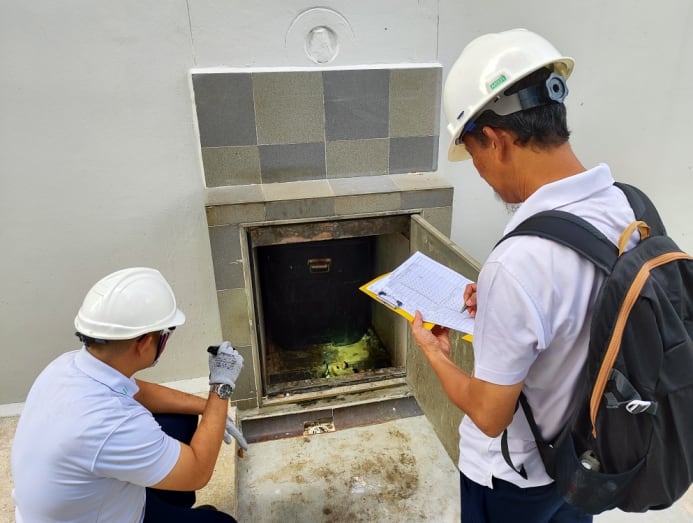
One approach could be conducting a long-term, localised study to track rat population growth in Singapore, Dr Vyas from NTU said.
The data collected could then be mapped into a predictive mathematical model to help the authorities assess the scale of the problem and identify potential upstream causes.
This would allow for early intervention to curb population growth, rather than addressing infestations only at a later stage, he added.
The study could gather data on key factors such as the concentration of locations with rat sightings, burrows and infestations, as well as track climatic conditions that influence population growth.
Other variables include human density and the diversity of environments where rats are found, whether in public housing blocks or nature reserves, for example.
Pest control firms noted, too, that the increase in rat infestations does not occur in isolation, but in tandem with other pest issues.
Mr Lim from the pest-control business said that besides rat issues, Bingo Pest has also seen an increase in bed bug and termite enquiries, for example.
If improper waste management or disposal practices were one of the factors driving rat infestations, there would naturally be a correlation between the increase in rodents and other pests such as cockroaches or house flies, due to the unsanitary environment, Mr Tan from the Singapore Pest Management Association said.
Therefore, individuals also play a part in keeping their environments clean and safe from the rodents’ reach, the experts emphasised.
Those living in areas with rat infestations could guard themselves against rat-transmitted or vector-borne diseases by maintaining good general hygiene and ensuring that food waste is properly stored and discarded.
They should also alert their town councils if there are issues at the bin centres or if they see rats around their neighbourhood’s hawker centres or shops.
Given that rat-transmitted diseases can be spread through rat urine, faeces and fleas, people should avoid direct contact with the rodents and their droppings, and be sure to wash their hands and cutlery before use, Dr Vasoo from NCID said.
Individuals should also wear a mask, rubber or plastic gloves and use a proper disinfectant such as bleach when clearing rodent droppings or nests.
They should use paper towels and disinfectants to wipe rodent urine or droppings, instead of vacuuming or sweeping, because this may suspend infectious droplets, Dr Vasoo advised.
Dr Tambyah said that people should also be alert for symptoms of rat-transmitted diseases:
- Leptospirosis – marked by fever, jaundice and dark urine
- Murine typhus – marked by fever and muscle aches, or occasionally, a rash
- Hantavirus – marked by fever and difficulties in breathing
Mr Wong the office worker said that the rodent problem at his workplace has indeed made him more mindful about his hygiene habits, so he ensures that he keeps the dustbins covered, for example.
He and his colleagues also make sure that their workplaces are clear of any food, especially snacks in plastic packages through which rats can chew.
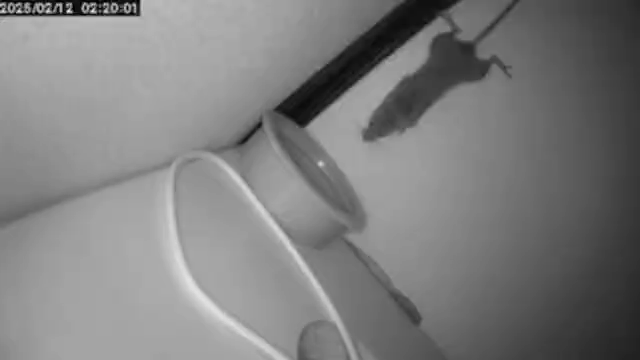
Ms Tan the tutor said that her increased encounters with rats have made her more conscious of reducing food waste and disposing of trash properly.
“When I dine at hawker centres, I will try to finish my food and properly clear up after myself, and not have food lying around on the tables.”













